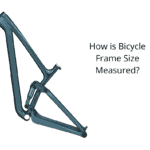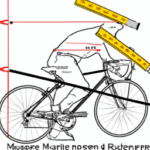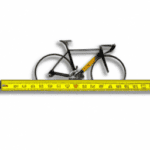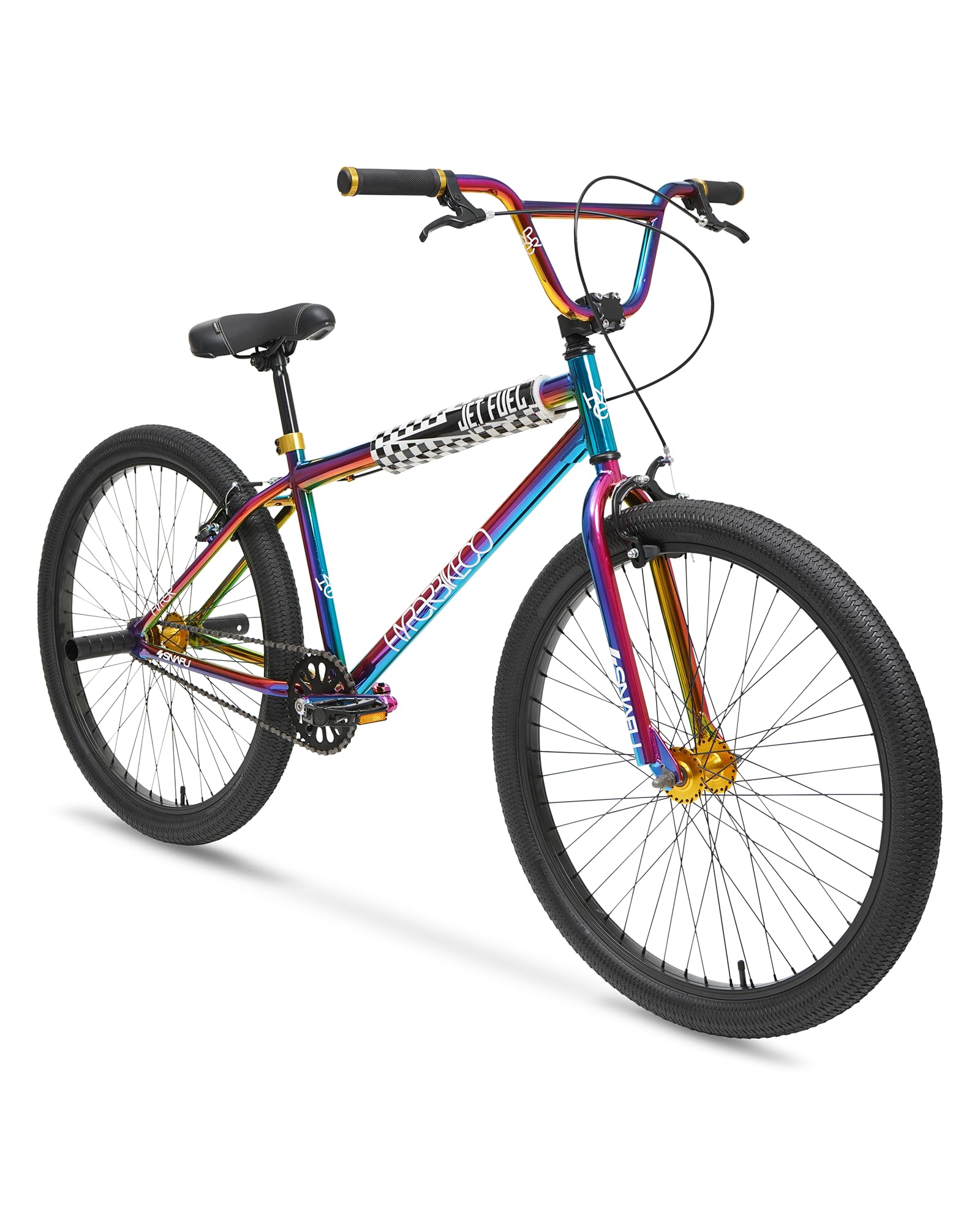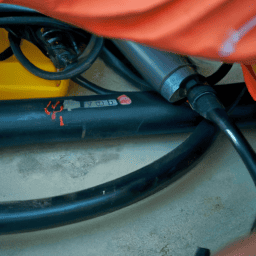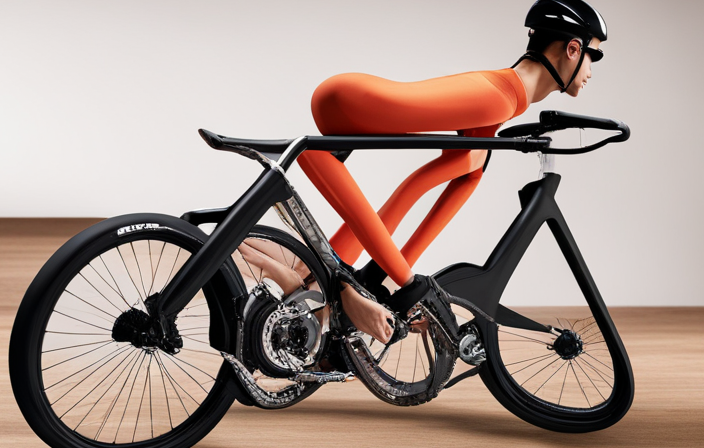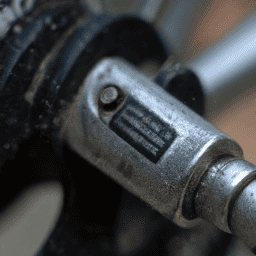Beginners Guides
Best Bicycle Top Tube Frame Bags for Your Ride
Need the ultimate top tube frame bag for your cycling adventures?
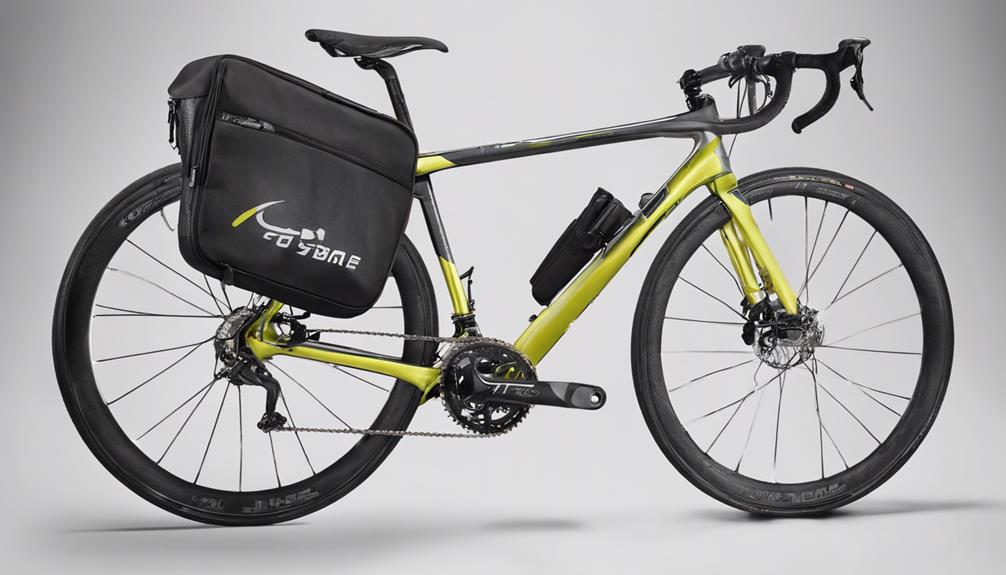
Have you ever wondered which top tube frame bag truly reigns supreme for your cycling adventures?
As we explore the vast array of options available, ranging from sleek designs to practical features, it becomes evident that the perfect fit for your ride may be just around the corner.
Let's unravel the mystery behind the best bicycle top tube frame bags and discover how they can elevate your biking experience to new heights.
Key Takeaways
- Top tube frame bags come in sizes up to 3 liters for ample storage on your bike.
- Look for durable materials like X-Pac and Cordura for long-lasting performance.
- Consider features like adjustable straps and magnetic closures for secure and easy access.
- Evaluate dimensions, volume, and organization options to choose the best bag for your needs.
Top Tube Frame Bags Overview
Top tube frame bags come in a variety of sizes, typically ranging from 1 to 3 liters, making them ideal for storing essentials during cycling trips. These frame bags are constructed using durable materials such as X-Pac, Cordura, and Challenge Sailcloth EPX to withstand the rigors of outdoor activities. Many of these Top Tube Bags feature adjustable straps that ensure secure mounting on various bike frames, providing a worry-free riding experience.
Additionally, these bags often come equipped with a magnetic closure system for easy access on the go, along with cable ports for convenient device charging while riding. With multiple compartments, cyclists can efficiently organize their snacks and tools, ensuring quick and easy access when needed.
The secure mounting and thoughtful design of these frame bags make them essential accessories for cyclists looking to bring along their must-have items on their adventures.
Features to Consider

When considering top tube frame bags for your cycling needs, it's important to evaluate the dimensions, storage capacity, and material durability to ensure optimal performance and convenience while riding. Here are some key features to consider:
- Dimensions and Volume: Ensure the top tube bag fits your frame size and offers adequate space to securely hold your essentials during the ride.
- Internal Dividers and Padding: Look for bags with internal dividers and padding to help organize your belongings and protect fragile items from damage while cycling.
- Durable Materials: Choose top tube bags made from durable materials like X-Pac, Cordura, or Challenge Sailcloth for long-lasting performance in various weather conditions.
- Attachment System and Accessibility Options: Evaluate the attachment system, whether Velcro straps or line-loc paracord, to ensure a stable and secure fit on your bike. Additionally, consider features like cable ports for charging devices on the go and magnetic closures for convenient one-handed access to your items.
Andrew The Maker Top Tube Bag

Crafted with a blend of X-Pac and Cordura materials, the Andrew The Maker Top Tube Bag delivers durability and ample storage for cyclists seeking reliable performance on their rides. This top tube bag boasts a volume of 0.9 liters, ideal for storing essential items within reach. Measuring 9.5 x 4.5 x 2.25 inches, it offers generous storage space while maintaining a sleek profile on the bike. Designed for stability, the Andrew The Maker Top Tube Bag ensures that items stay secure during rides, providing cyclists with peace of mind. The durable construction of X-Pac and Cordura materials guarantees longevity, making this bag a reliable companion for countless cycling adventures. Offering a balance of size, material quality, and functionality, this top tube bag is a practical choice for cyclists looking to strike the perfect equilibrium between storage capacity and performance.
| Feature | Description |
|---|---|
| Material | X-Pac and Cordura |
| Volume | 0.9 liters |
| Dimensions | 9.5 x 4.5 x 2.25 inches |
| Stability | Designed for stability |
| Storage | Ample storage space |
Bedrock Bags Dakota Tank Bag
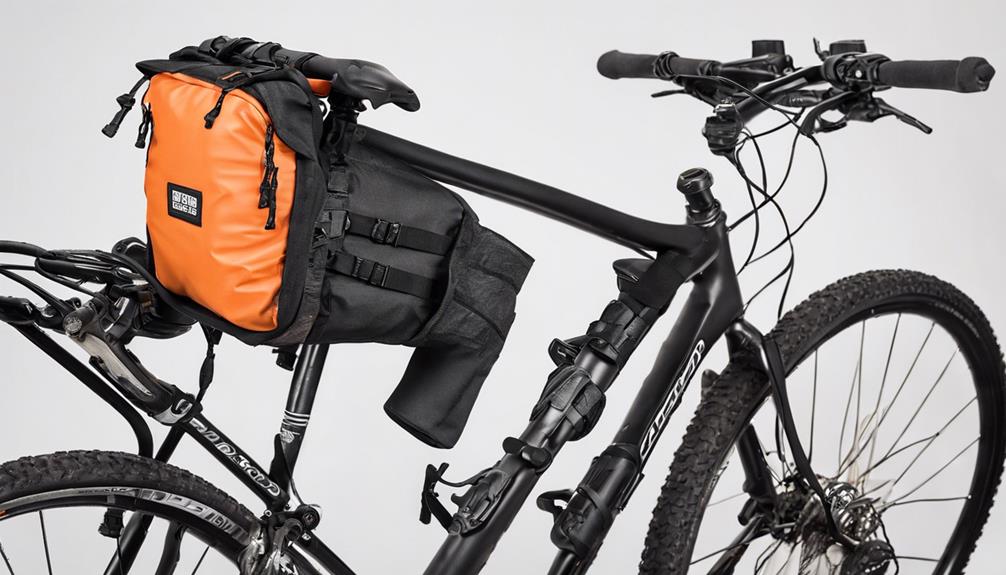
Moving from the Andrew The Maker Top Tube Bag to the Bedrock Bags Dakota Tank Bag, cyclists can now explore a versatile and durable storage solution ideal for various cycling adventures.
The Bedrock Bags Dakota Tank Bag offers a 0.9L volume capacity, perfect for carrying essentials like snacks and small electronics on your rides. Constructed with durable X-Pac and Cordura materials, this tank bag ensures long-lasting performance even in challenging conditions. Measuring 8.5 x 4 x 3 inches, it provides ample storage space without being overly bulky.
The stable Velcro top-tube strap guarantees secure attachment to your bike frame, offering peace of mind during gravel rides, bikepacking trips, and long-distance cycling adventures. With the Bedrock Bags Dakota Tank Bag, cyclists can enjoy the freedom of the open road while having their essentials within easy reach.
Bike Bag Dude Top Tube Garage

Constructed with durable Cordura and X-Pac materials, the Bike Bag Dude Top Tube Garage offers cyclists a spacious 1.4L volume for storing essential items during rides. This top tube bag, measuring 11.4 x 4.7 x 2.7 inches, provides ample space for items like snacks, tools, or any necessities you might need while on the go. The use of Cordura and X-Pac materials ensures longevity and protection for your belongings during rides. With a stable Velcro top-tube strap, this bag guarantees secure attachment to your bike, giving you peace of mind as you pedal through various terrains. The Top Tube Garage is designed to cater to the freedom-seeking rider who values both storage capacity and durability in their gear. Whether you're embarking on a short urban commute or a long-distance cycling adventure, this bike bag is a reliable companion for all your storage needs.
| Features | Specifications |
|---|---|
| Volume | 1.4L |
| Materials | Cordura, X-Pac |
| Attachment System | Velcro strap |
Frequently Asked Questions
Should I Get a Top Tube Bag?
Yes, we should consider a top tube bag for our cycling needs. It provides easy access to essentials without stopping. Various sizes and designs cater to different preferences, distributing weight for better balance on long rides.
How Do I Choose a Frame Bag?
When choosing a frame bag, we consider capacity, material durability, attachment system security, and features like dividers and cord ports. It's crucial to ensure compatibility with your bike frame for a perfect fit.
Is a Soft or Hard Bike Bag Better?
Are we looking for protection or flexibility? Soft bike bags are lighter and more adaptable, while hard bags offer superior protection. We'd choose based on the ride needs, balancing durability and weight. What's your ride preference?
Is a Top Tube Bag Aero?
Yes, a top tube bag can affect aerodynamics with its position on the bike frame. Its bulk and shape disrupt airflow, potentially slowing a rider. For those focused on speed, choosing streamlined designs or bags closer to the frame may be beneficial.
Conclusion
In conclusion, choosing the right top tube frame bag can greatly enhance your cycling experience.
As the saying goes, 'it's better to have it and not need it, than to need it and not have it.'
With options like the Andrew The Maker Top Tube Bag, Bedrock Bags Dakota Tank Bag, and Bike Bag Dude Top Tube Garage, there's a perfect bag out there to suit your needs and make your ride more enjoyable.
Choose wisely and happy cycling!
Olivia’s writing is not only informative but also inspiring. She has a knack for telling stories that capture the essence of cycling and the joy it brings to people’s lives. Her writing has been praised by readers and industry experts alike for its clarity, depth, and authenticity.
In addition to her writing, Olivia is also an avid cyclist. She enjoys exploring new trails and routes and has participated in several cycling events and races. Her first-hand experience with cycling gives her a unique perspective on the sport, reflected in her writing.
Overall, Olivia is a talented writer passionate about cycling and dedicated to producing high-quality content for FlatironBike. Her contributions to the magazine have helped make it a go-to source for cycling enthusiasts worldwide.
Beginners Guides
7 Ways a Bicycle Is Useful to Us
Pedal into a world of possibilities with the incredible benefits a bicycle offers – from personal health to environmental impact.

Riding a bicycle is like unlocking a treasure chest of benefits waiting to be discovered. From boosting our physical health to reducing our carbon footprint, a bicycle is a versatile tool that offers more than meets the eye.
Let's explore the seven ways a bicycle can positively impact our lives and society as a whole.
Key Takeaways
- Improves physical health by enhancing fitness levels and strengthening muscles.
- Reduces environmental impact by cutting pollution and promoting sustainability.
- Saves money through cost-effective commuting and minimal maintenance costs.
- Enhances mental well-being by reducing stress, boosting brain function, and fostering social connections.
Health Benefits of Cycling
Cycling offers a myriad of health benefits, reducing the risk of various health conditions and improving overall fitness levels. Engaging in regular cycling serves as an excellent form of exercise that enhances cardiovascular fitness and muscle strength. This aerobic exercise not only aids in weight loss but also lowers the risk of stroke, heart attack, cancer, depression, diabetes, obesity, and arthritis. Just dedicating 2-4 hours per week to cycling can lead to significant health improvements, making it a time-efficient way to stay fit.
Additionally, the mental health benefits of cycling are noteworthy, as it provides a means to replace sedentary time with physical activity, promoting overall well-being. Even individuals with physical limitations can benefit from hand cycling, which offers cardiovascular and aerobic advantages for those with amputations, spinal injuries, or stroke recovery. Cycling truly embodies the essence of holistic health and vitality.
Environmental Friendliness
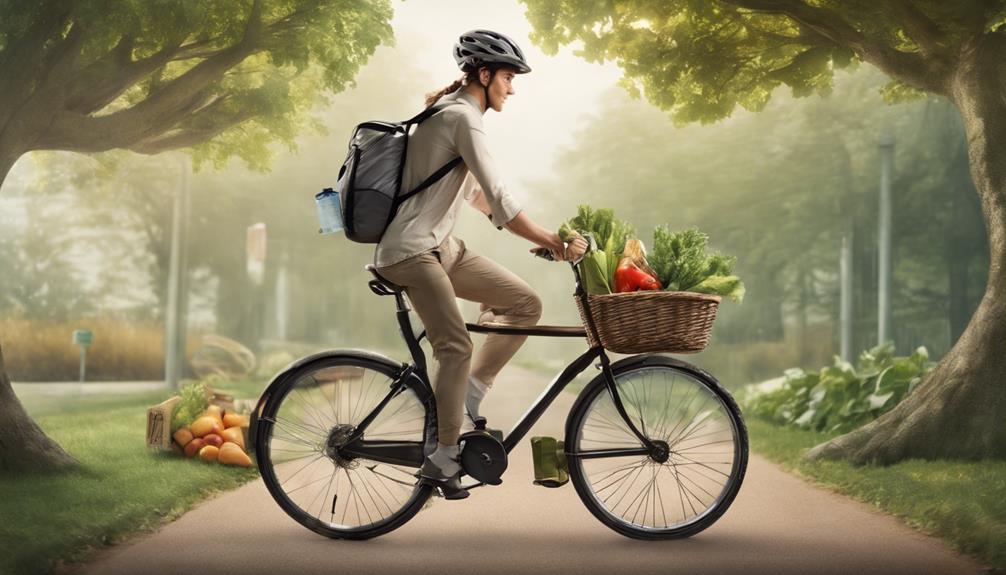
Bicycles, as an eco-friendly mode of transportation, play a crucial role in reducing pollution and promoting environmental sustainability. Riding a bike isn't only environmentally friendly but also offers numerous health benefits. Compared to vehicle passengers, cyclists inhale less pollution, contributing to better overall health. Commuting by bike significantly reduces the transportation carbon footprint by 67%, making it a sustainable choice for those concerned about environmental conservation.
In urban areas, where congestion and emissions are pressing issues, bikes provide a cleaner and healthier transportation option. By choosing to cycle instead of drive, individuals can actively help to reduce emissions and alleviate traffic congestion. Cycling not only benefits the individual rider but also contributes to a cleaner environment for all. Embracing bicycles as a means of transport is a step towards creating a more sustainable and eco-conscious society.
Cost-Effective Transportation Solution

Cycling offers an economic travel option for individuals seeking a budget-friendly commuting choice. By opting for a bicycle, we can enjoy an affordable way to travel that saves us money on fuel, insurance, and parking fees.
The minimal maintenance costs of bicycles compared to cars make them a cost-effective transportation solution for daily commuting needs.
Economic Travel Option
Embracing two-wheeled travel offers a budget-friendly and efficient way to navigate urban landscapes, saving on various transportation expenses. Cycling as an economic travel option not only helps in avoiding traffic congestion and parking expenses but also reduces the overall cost of commuting compared to owning a car. Bicycling serves as a cost-effective mode of transportation, cutting down expenses on fuel, registration, insurance, and maintenance. Furthermore, it promotes physical fitness, eliminating the need for costly gym memberships. By choosing bicycles for transportation, individuals can enjoy the built-in exercise benefits while minimizing travel costs.
| Benefits | Description |
|---|---|
| Cost-Effective | Saves money on fuel, registration, insurance, and maintenance. |
| Traffic Congestion | Helps in avoiding congested roads, leading to faster and more reliable travel. |
| Parking Expenses | Eliminates the need for expensive parking fees in urban areas. |
| Physical Fitness | Promotes health and wellness through regular physical activity. |
| Built-in Exercise Benefits | Provides exercise benefits while commuting, reducing the need for a separate gym membership. |
Budget-Friendly Commuting Choice
Navigating urban landscapes on two wheels presents a budget-friendly and efficient means of transportation, offering significant savings on various commuting expenses. Commuting by bike is a cost-effective option that helps individuals save money on fuel, maintenance, insurance, and registration fees.
Choosing a bicycle for commuting is an economical mode of transport, reducing overall transportation expenses and avoiding the high costs associated with car ownership. Cycling as transportation provides significant savings over time, making it a wise financial decision for those looking to cut down on commuting costs.
Affordable Way to Travel
When considering cost-effective transportation solutions, utilizing bicycles emerges as a practical and economical choice for travel. Cycling is an affordable way to travel, significantly reducing transportation costs compared to owning and maintaining a car. Here are some key points highlighting why cycling is a budget-friendly and practical option for travel:
- Bicycles are a cost-effective mode of transportation, saving money on fuel, registration, insurance, and maintenance.
- Using a bicycle for transportation helps avoid expenses associated with car ownership, making it a budget-friendly option.
- Bicycles provide an economical travel solution, minimizing the financial burden of fuel prices and maintenance fees.
- Choosing a bicycle for transportation is a practical and affordable option that contributes to overall cost savings.
Physical Fitness Improvement
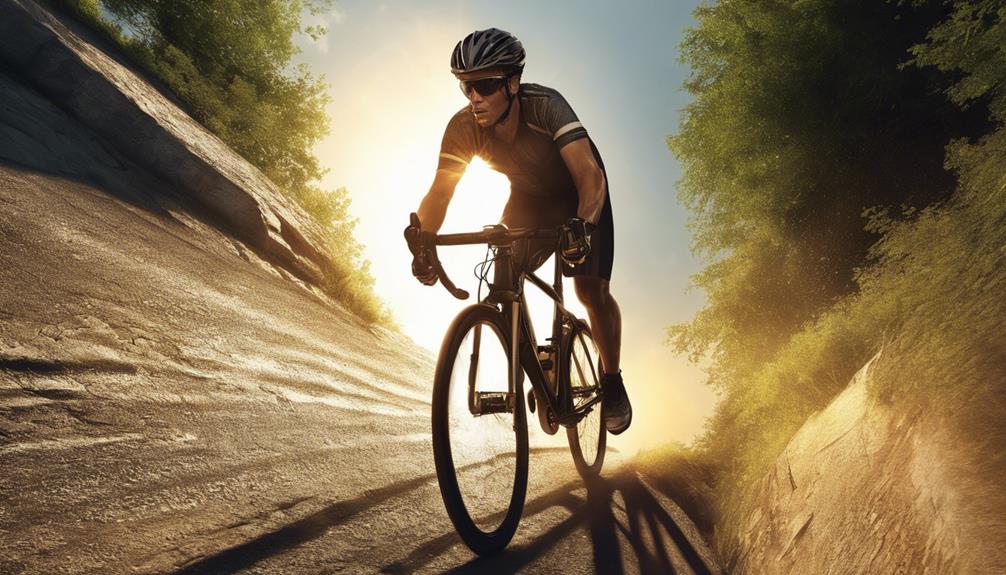
Cycling offers a substantial boost to our physical fitness levels by targeting key muscle groups and enhancing cardiovascular health. It's a low-impact exercise that strengthens the legs and improves balance, coordination, and posture.
Regular cycling sessions can help improve stamina, endurance, and overall cardiovascular function, making it a fantastic workout choice for individuals of all fitness levels.
Health Benefits
Improving physical fitness through cycling offers a range of benefits, including strengthening leg muscles, enhancing balance, posture, and coordination, and targeting key muscle groups such as quads, glutes, hamstrings, and calves.
Cycling is a low-impact exercise option that's gentle on the body and enhances cardiovascular function and overall fitness levels. It provides a time-efficient way to get fit and replace sedentary time with healthy exercise, benefiting individuals of all ages.
Regular cycling strengthens the cardiovascular system, enabling more exercise with less effort, and helps individuals achieve physical activity guidelines effectively. Adults cycling use 10 times more oxygen than sitting, promoting respiratory health by making the lungs work harder and delivering more oxygen where it's needed.
Cardiovascular Workout
Enhancing cardiovascular fitness through regular cycling contributes significantly to overall physical well-being and health. Cycling provides an effective cardiovascular workout, strengthening the heart, improving blood circulation, and lowering blood pressure.
By increasing heart rate, cycling helps improve cardiovascular fitness, reduce the risk of heart disease and stroke, and enhance endurance. This low-impact exercise is gentle on the joints while still offering a challenging workout.
Consistent cycling sessions lead to improved heart health, increased stamina, and enhanced physical fitness levels. Incorporating cycling into a routine not only benefits the heart but also contributes to overall well-being by boosting fitness and lowering the risks associated with a sedentary lifestyle.
Stress Reduction and Mental Wellbeing

Stress levels can be effectively reduced and mental well-being promoted through the scientifically proven benefits of cycling. Cycling isn't just a physical activity; it also has significant positive effects on mental health. Here are some key ways cycling contributes to stress reduction and mental well-being:
- Cycling releases endorphins, known as 'feel-good' hormones, which help reduce stress, anxiety, and depression.
- Regular cycling boosts brain function, enhances cognitive abilities, and improves overall mental health.
- Engaging in cycling stimulates blood flow to the brain, aiding in relaxation, focus, and concentration.
- Studies show that cycling is as effective as medication in reducing stress and promoting a positive mindset.
Community Connection and Social Interaction

Cycling not only promotes physical health but also nurtures a sense of community and encourages social interactions among individuals with shared interests. Riding a bicycle creates opportunities for community connection and social engagement through various avenues such as cycling clubs, group rides, and cycling events. Cyclists often come together to share their passion for biking, meet new people, make friends, and form lasting bonds.
| Community Connection | Social Interaction |
|---|---|
| Cycling clubs provide a platform for cyclists to engage with like-minded individuals. | Group rides offer a chance to connect with others while enjoying the thrill of cycling. |
| Community bike events, like charity rides or cycling festivals, foster an inclusive environment for cyclists. | Participating in cycling events allows cyclists to meet new people and form friendships based on their shared love for biking. |
In these settings, individuals find a supportive community that not only values their shared interest in cycling but also encourages social connections and interactions.
Sustainable and Green Lifestyle Choice
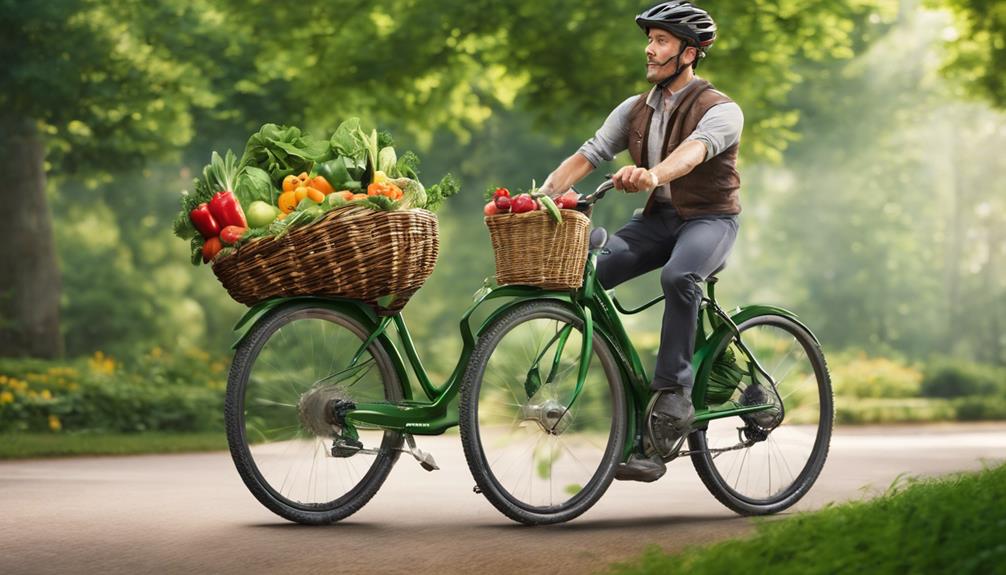
Choosing to ride a bicycle aligns with sustainable living practices and reduces our reliance on non-renewable resources. Bicycles are a sustainable transportation choice, producing zero emissions and reducing the carbon footprint. Opting for cycling helps create a greener environment by decreasing air pollution and harmful emissions. Cycling promotes a green lifestyle by minimizing the use of fossil fuels and contributing to cleaner air.
It's an eco-friendly mode of transport that supports the preservation of natural resources and aligns with sustainable living practices. By choosing bicycles over cars, we actively participate in reducing our carbon footprint and promoting green transportation. Embracing cycling as a sustainable and green lifestyle choice not only benefits our health but also plays a significant role in preserving the environment for future generations.
Let's pedal towards a more sustainable future together.
Frequently Asked Questions
What Can Bicycles Be Used For?
Bicycles can be used for commuting to work, school, or other destinations, reducing reliance on cars and public transportation. They are ideal for recreational purposes such as cycling tours, exploring nature trails, or participating in cycling events.
How Does the Bicycle Help Society?
Cycling weaves our urban tapestry with threads of health, community, and sustainability. Bicycles untangle traffic knots, paint green strokes on carbon clouds, and pedal us into a brighter, closer-knit future.
How Was the Bicycle Important?
The bicycle was crucial throughout history, revolutionizing transportation, empowering women, boosting economies, and promoting public health. Its impact continues to be felt worldwide, providing reliable transport and fostering physical activity, making it a truly enduring invention.
How Do Bikes Help the Environment?
Cycling, like a green breeze, helps the environment by reducing carbon emissions and air pollution. Bicycles are a sustainable transportation choice, cutting down our carbon footprint significantly compared to driving, contributing to cleaner air quality.
Conclusion
In conclusion, cycling offers a multitude of benefits for our health, the environment, and our wallets.
Did you know that cycling just 20 miles a week can reduce the risk of heart disease by 50%?
With its ability to improve physical fitness, mental well-being, and community connections, biking is truly a valuable and enjoyable way to stay healthy and happy.
So grab your helmet and hit the road for a sustainable and rewarding lifestyle choice!
Olivia’s writing is not only informative but also inspiring. She has a knack for telling stories that capture the essence of cycling and the joy it brings to people’s lives. Her writing has been praised by readers and industry experts alike for its clarity, depth, and authenticity.
In addition to her writing, Olivia is also an avid cyclist. She enjoys exploring new trails and routes and has participated in several cycling events and races. Her first-hand experience with cycling gives her a unique perspective on the sport, reflected in her writing.
Overall, Olivia is a talented writer passionate about cycling and dedicated to producing high-quality content for FlatironBike. Her contributions to the magazine have helped make it a go-to source for cycling enthusiasts worldwide.
Beginners Guides
What Are the Basics of How a Bicycle Freewheel Works?
Leveraging intricate mechanisms, bicycle freewheels allow wheels to spin freely—discover the fascinating basics and functions behind this essential component.

When we hop on our bicycles, we often take for granted the intricate workings of the freewheel in the rear hub. Did you know that the freewheel plays a vital role in allowing the wheel to rotate independently of the pedals?
Understanding the mechanisms behind how a bicycle freewheel operates can provide valuable insight into the smooth functioning of this essential component. Let's explore the inner workings of different types of freewheels and uncover the basics of their functionality to gain a deeper appreciation for this often overlooked yet crucial part of our bikes.
Key Takeaways
- Pawls and ratchets enable torque transmission and wheel movement.
- Ratchet and pawl mechanism ensures smooth power transfer and rider flexibility.
- Star ratchet freewheels offer robust construction and reliability on challenging terrains.
- Roller freewheels use ball bearing design for durability and smooth operation.
Components of a Bicycle Freewheel
In a bicycle freewheel, the components responsible for transmitting torque and facilitating forward pedaling are the pawls and ratchets. The ratchet and pawl system in the freewheel is integral to its function.
The pawls, small spring-loaded components, engage with the ratchet's teeth to allow the wheel to turn when the pedals are in use. This interaction forms the basis of the drive system, enabling the transfer of power from the rider's pedaling to the wheel.
The star ratchet design within the freewheel ensures that the pedals remain stationary when the wheel is spinning freely, preventing any unwanted backward rotation. When coasting or not pedaling, the pawls disengage from the ratchet, allowing the wheel to rotate independently without resistance.
This intricate mechanism of pawls and ratchets in the freewheel guarantees a smooth and efficient forward motion while offering the rider the freedom to pedal without constraint.
Ratchet and Pawl Mechanism Explained

Exploring the inner workings of a bicycle freewheel reveals the intricate and efficient system known as the ratchet and pawl mechanism. This mechanism plays a crucial role in enabling torque transmission and facilitating the forward movement of the bicycle.
Here's a breakdown of its key components:
- Ratchet and Pawl Interaction: The pawls engage with the teeth on the ratchet, allowing the wheel to move forward when the pedals are in motion.
- Disengagement for Free Movement: When the pedals are reversed, the pawls disengage from the ratchet, enabling free movement without propulsion.
- Spring Mechanism for Torque Transmission: A spring mechanism within the system ensures that the pawls engage effectively with the ratchet to transmit torque seamlessly.
- Audible Click Feature: The characteristic click sound heard when reversing pedals signifies the engagement and disengagement of the pawls with the ratchet.
This precise and reliable design ensures that the bicycle freewheel operates smoothly, providing efficient power transfer while maintaining the flexibility and freedom desired by cyclists.
Understanding Star Ratchet Freewheels

Amid the realm of bicycle freewheel mechanisms, star ratchet freewheels stand out for their robust construction and enhanced durability. Consisting of two toothed discs with slanted teeth pressed together by a spring during pedaling, these freewheels excel in demanding riding conditions like freeride and downhill.
When idling, the toothed discs in star ratchet freewheels move against each other, creating a characteristic noise that provides riders with distinct auditory feedback. This noise is a result of the discs moving against each other, signifying the reliability and durability of this freewheel mechanism.
The robust nature of star ratchet freewheels makes them a preferred choice for riders tackling challenging terrains, especially when going downhill. The enhanced durability of these freewheels ensures that riders can trust their rear wheel's performance even in the most demanding situations, offering a sense of freedom and confidence while riding.
Inner Workings of Roller Freewheels

Utilizing pinch rollers that are pressed against the hub during pedaling, roller freewheels propel the bicycle forward with efficiency and minimal noise. The inner workings of roller freewheels involve a sophisticated design that ensures seamless functionality.
Here's a closer look at how roller freewheels operate:
- Pinch Roller Mechanism: Pinch rollers are key components that make direct contact with the rear sprocket, transferring power efficiently during pedaling.
- Guide Tracks: These rollers move freely within guide tracks when coasting, resulting in a noiseless riding experience.
- Ball Bearing Design: Similar to ball bearings, roller freewheels are designed for smooth and quiet operation, enhancing the overall riding experience.
- Durability and Reliability: Roller freewheels are renowned for their durability and long service life, making them a dependable choice for riders seeking a silent ride.
The meticulous engineering behind roller freewheels ensures smooth engagement under load and quiet operation while coasting, offering riders the freedom to enjoy a peaceful cycling experience.
Functionality of Sprag Clutch Freewheels
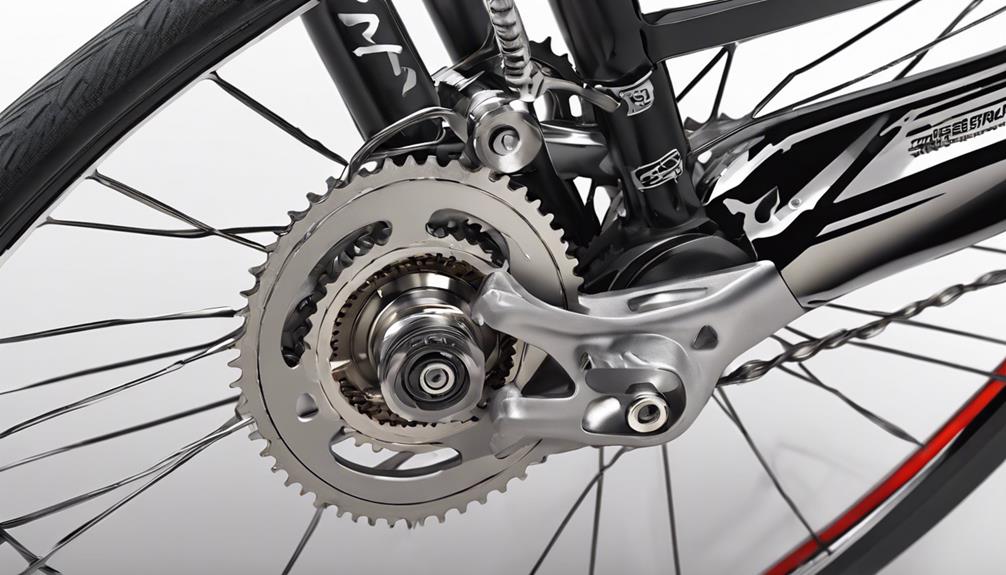
Sprag clutch freewheels employ sprags to facilitate torque transmission within bicycles, ensuring efficient power transfer. When the cyclist stops pedaling, the sprags disengage, allowing the wheel to spin freely without moving the pedals. The design of sprag clutch freewheels enables smooth engagement and disengagement, leading to efficient power transfer when pedaling resumes. The instant engagement of the sprags ensures quick and responsive power delivery, enhancing the overall riding experience.
Due to their simple yet effective design, sprag clutch freewheels require minimal maintenance. Cyclists can enjoy reliable performance in various riding conditions without the need for frequent adjustments or repairs. The durability and functionality of sprag clutch mechanisms make them a popular choice among cyclists seeking consistent and hassle-free operation. Whether navigating city streets or tackling rugged terrains, sprag clutch freewheels provide the necessary torque transmission for a smooth and enjoyable ride.
Frequently Asked Questions
How Does a Bicycle Freewheel Work?
We know how a bicycle freewheel works. It allows pedals to rotate independently from the rear wheel, ensuring smooth coasting. The mechanism engages during forward pedaling and disengages when coasting or backpedaling, playing a vital role in efficient cycling.
What Is the Principle of Freewheel?
Freewheeling is akin to a river flowing, allowing us to move forward effortlessly. The principle of a freewheel is to enable coasting by disconnecting pedals from the wheel, granting us the freedom to control our speed effortlessly.
What Is the Free Wheeling Technique?
Freewheeling technique on a bicycle involves coasting without pedaling, allowing riders to conserve energy and maintain momentum. It's crucial for controlling speed and balance during descents, enhancing the overall riding experience.
What Is the Difference Between a Freewheel and a Freehub?
We differentiate between a freewheel and a freehub by their attachment methods to the hub and compatibility with sprocket configurations. Freewheels thread onto hubs with a lockring, while freehubs use a splined interface for cassettes, offering more versatility.
Conclusion
In conclusion, the bicycle freewheel is a marvel of engineering, allowing for seamless transmission of power while enabling the wheel to rotate independently of the pedals.
Its intricate mechanisms, such as the ratchet and pawl, star ratchet, roller, and sprag clutch, work in harmony to provide cyclists with a smooth and efficient riding experience.
The freewheel is like a symphony of precision, orchestrating the dance between pedal power and wheel rotation with unparalleled grace and finesse.
Olivia’s writing is not only informative but also inspiring. She has a knack for telling stories that capture the essence of cycling and the joy it brings to people’s lives. Her writing has been praised by readers and industry experts alike for its clarity, depth, and authenticity.
In addition to her writing, Olivia is also an avid cyclist. She enjoys exploring new trails and routes and has participated in several cycling events and races. Her first-hand experience with cycling gives her a unique perspective on the sport, reflected in her writing.
Overall, Olivia is a talented writer passionate about cycling and dedicated to producing high-quality content for FlatironBike. Her contributions to the magazine have helped make it a go-to source for cycling enthusiasts worldwide.
Beginners Guides
How Bicycle Tires Lose Air: A Comprehensive Guide
Prepare to uncover the perplexing reasons behind your bike tires losing air, leading to a smoother ride – but are you aware of the surprising culprits?
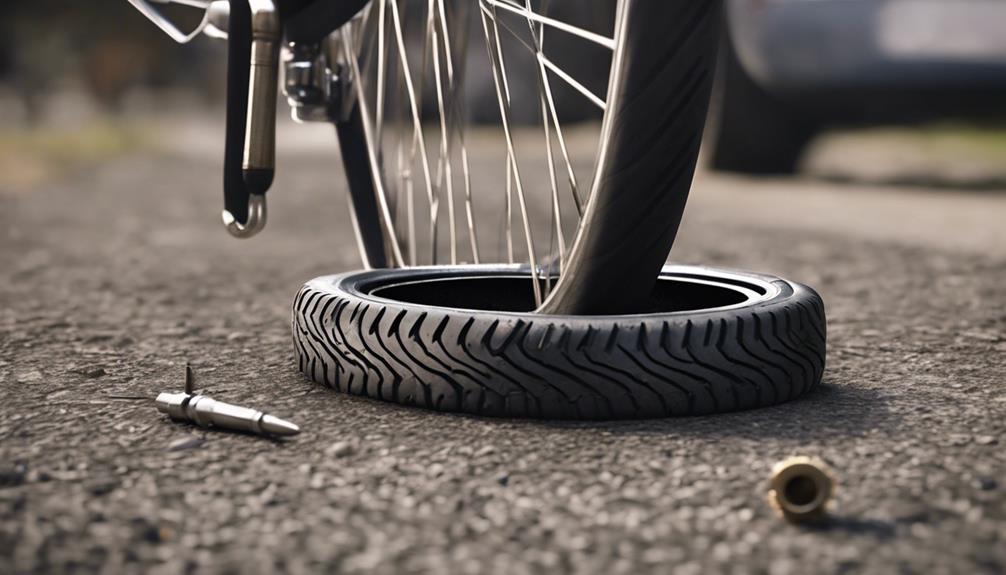
When it comes to the mystery of how bicycle tires lose air, it often seems like a never-ending battle of inflating and deflating. Understanding the intricate ways in which air escapes from your tires is crucial for every cyclist.
From tiny leaks to temperature fluctuations, the factors at play might surprise you. So, let's unravel the secrets behind the gradual air loss in bicycle tires and discover practical solutions that can keep your ride smooth and hassle-free.
Key Takeaways
- Microscopic pores and high pressure contribute to gradual air loss in bicycle tires.
- Temperature changes affect tire pressure, emphasizing the need for regular checks.
- Valve issues can cause air loss, necessitating routine inspections for maintenance.
- Understanding natural leakage and implementing preventive strategies are essential for optimal tire performance.
Common Causes of Bicycle Tire Air Loss
Microscopic pores in bicycle tires or tubes can lead to gradual air loss over time. These tiny imperfections allow air molecules to slowly escape, resulting in a decrease in tire pressure.
Additionally, temperature changes play a crucial role in the rate of air loss. As temperatures fluctuate, the air inside the tire expands and contracts, influencing the pressure within the tire. High-pressure tires are particularly susceptible to deflation due to the permeability of rubber, causing air to seep out more rapidly.
Valves, especially in high-pressure tubes, can also be a common culprit of air loss from bicycle tires. The quality of the tube and valve are significant factors affecting the rate of air loss, along with variations in tire size and tube types.
Understanding these common causes of air loss is essential for maintaining proper tire pressure and ensuring a smooth cycling experience.
Impact of Temperature Changes on Tire Pressure

Temperature fluctuations significantly impact tire pressure, causing air to expand in warm conditions and contract in cold conditions, which in turn affects the overall performance of bicycle tires.
Here are four key points to consider regarding the impact of temperature changes on tire pressure:
- Pressure Fluctuation: Temperature changes can lead to fluctuations in tire pressure, with each 10°F shift resulting in approximately a 1 PSI change in pressure.
- Overinflation Risk: High temperatures can cause the air inside the tire to expand, leading to overinflation if not monitored and adjusted accordingly.
- Underinflation Risk: Conversely, cold temperatures can cause the air to contract, potentially resulting in underinflation, which can affect the stability and handling of the bicycle.
- Maintenance Importance: Regularly checking and adjusting tire pressure based on temperature variations is crucial to ensuring optimal performance and safety while riding. Maintaining the correct tire pressure helps prevent premature wear, improves traction, and enhances overall ride quality.
The Role of Valve Issues in Air Loss

Examining the integrity of valve components is essential in understanding the impact of valve issues on air loss in bicycle tires. Valve problems, such as loose valve cores, can result in gradual air loss, leading to underinflated tires and reduced performance.
Proper maintenance, including tightening the valve core, is crucial to prevent air leakage and maintain optimal tire pressure. Neglecting valve care can disrupt the airtight seal, allowing air to escape slowly over time. Factors like temperature fluctuations can also affect valve performance, exacerbating air loss in bike tires.
To ensure consistent air retention, regular valve inspections and maintenance are necessary. By prioritizing valve health and addressing any issues promptly, cyclists can avoid unnecessary air loss, optimize tire pressure, and enhance overall riding experience. Remember, maintaining proper valve function is key to preserving tire integrity and maximizing bike performance.
Understanding Natural Leakage in Tires
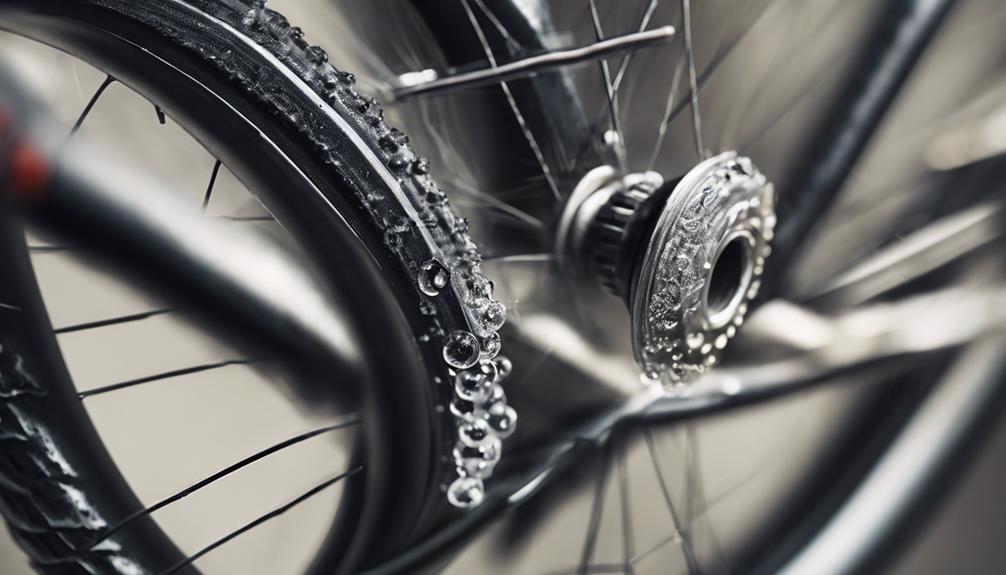
Natural leakage in bicycle tires, stemming from microscopic pores in the tire/tube, is a common phenomenon that results in a gradual decrease in tire pressure over time. Understanding this natural air loss is crucial for maintaining optimal tire performance.
Here are four key points to consider:
- Rate of Leakage: The rate of air loss due to natural leakage can vary between 1-5 psi per day, depending on the quality of the tire/tube and environmental factors like temperature changes.
- Impact of Pressure: Higher pressure tires tend to deflate faster than lower pressure ones, as air molecules escape more readily through the pores in the rubber material.
- Riding Conditions: Factors such as the type of road surface and the intensity of riding can also influence the rate of natural air loss in bicycle tires.
- Quality Matters: The quality of the tube and valve in the tire assembly can significantly affect the overall rate of air loss, emphasizing the importance of using high-quality components.
Understanding these nuances of natural air leakage is essential for cyclists to effectively manage and maintain their tire pressure levels.
Strategies to Prevent Tire Deflation

To effectively prevent tire deflation, implementing proper maintenance practices and utilizing high-quality components is paramount. Properly sealing tubeless tires is crucial to reduce air loss. Initial settling of sealant often leads to higher pressure drops, so ensuring a secure seal is essential.
Regularly inspecting and replacing tubeless valves can prevent air leakage and maintain optimal tire pressure levels within the recommended range. High-quality tubes and valves are also instrumental in minimizing air loss in tubed tires, ensuring consistent pressure levels for longer periods.
Tightening the valve core on both tubeless and tubed tires is a simple yet effective method to prevent unnecessary air loss and maintain tire inflation. Monitoring pressure trends and promptly addressing rapid pressure loss are key strategies to prevent tire deflation and maintain safe riding conditions.
Frequently Asked Questions
Why Do Bicycle Tires Lose Air Pressure?
We lose air pressure in bicycle tires due to microscopic pores allowing air molecules to escape gradually. Temperature changes cause air to expand and contract, affecting tire pressure. The tube quality and valve influence air loss rate.
Why Is My Bike Tire Losing Air Without a Hole?
We've noticed air loss in bike tires without visible damage. Microscopic pores, temperature fluctuations, tube quality, and tire type can all be contributing factors. Regular maintenance and pressure checks are essential to address gradual air loss issues effectively.
Can a Bike Tyre Lose Pressure Without a Puncture?
Yes, bike tires can lose pressure without a puncture due to factors like air permeation. Changes in temperature and tube type impact pressure levels. Regular pressure checks and adjustments help manage gradual air loss effectively.
Why Does My Bike Tire Keep Deflating?
Our bike tire keeps deflating possibly due to microscopic pores in the tire or tube, air molecules escaping, temperature fluctuations affecting pressure, and valve quality. Higher pressure tires may deflate quicker due to air permeation.
Conclusion
In conclusion, just as a bike tire loses air over time, so too do we experience moments of deflation. By recognizing the common causes and implementing preventive strategies, we can maintain optimal performance and resilience.
Like a well-inflated tire propelling us forward, let's strive to overcome challenges and obstacles with determination and perseverance. Remember, just as proper tire pressure is crucial for a smooth ride, maintaining our inner strength is essential for navigating life's journey.
Olivia’s writing is not only informative but also inspiring. She has a knack for telling stories that capture the essence of cycling and the joy it brings to people’s lives. Her writing has been praised by readers and industry experts alike for its clarity, depth, and authenticity.
In addition to her writing, Olivia is also an avid cyclist. She enjoys exploring new trails and routes and has participated in several cycling events and races. Her first-hand experience with cycling gives her a unique perspective on the sport, reflected in her writing.
Overall, Olivia is a talented writer passionate about cycling and dedicated to producing high-quality content for FlatironBike. Her contributions to the magazine have helped make it a go-to source for cycling enthusiasts worldwide.
-

 Electric Bike3 months ago
Electric Bike3 months agoHow To Turn Your Bike Into An Electric Generator
-

 Bike2 months ago
Bike2 months agoAdvantages and Disadvantages of a Carbon Fiber Bike Frame
-

 Beginners Guides2 months ago
Beginners Guides2 months agoA Guide to Right Hybrid Bike Posture: How to Sit on the Bike for Optimal Performance
-
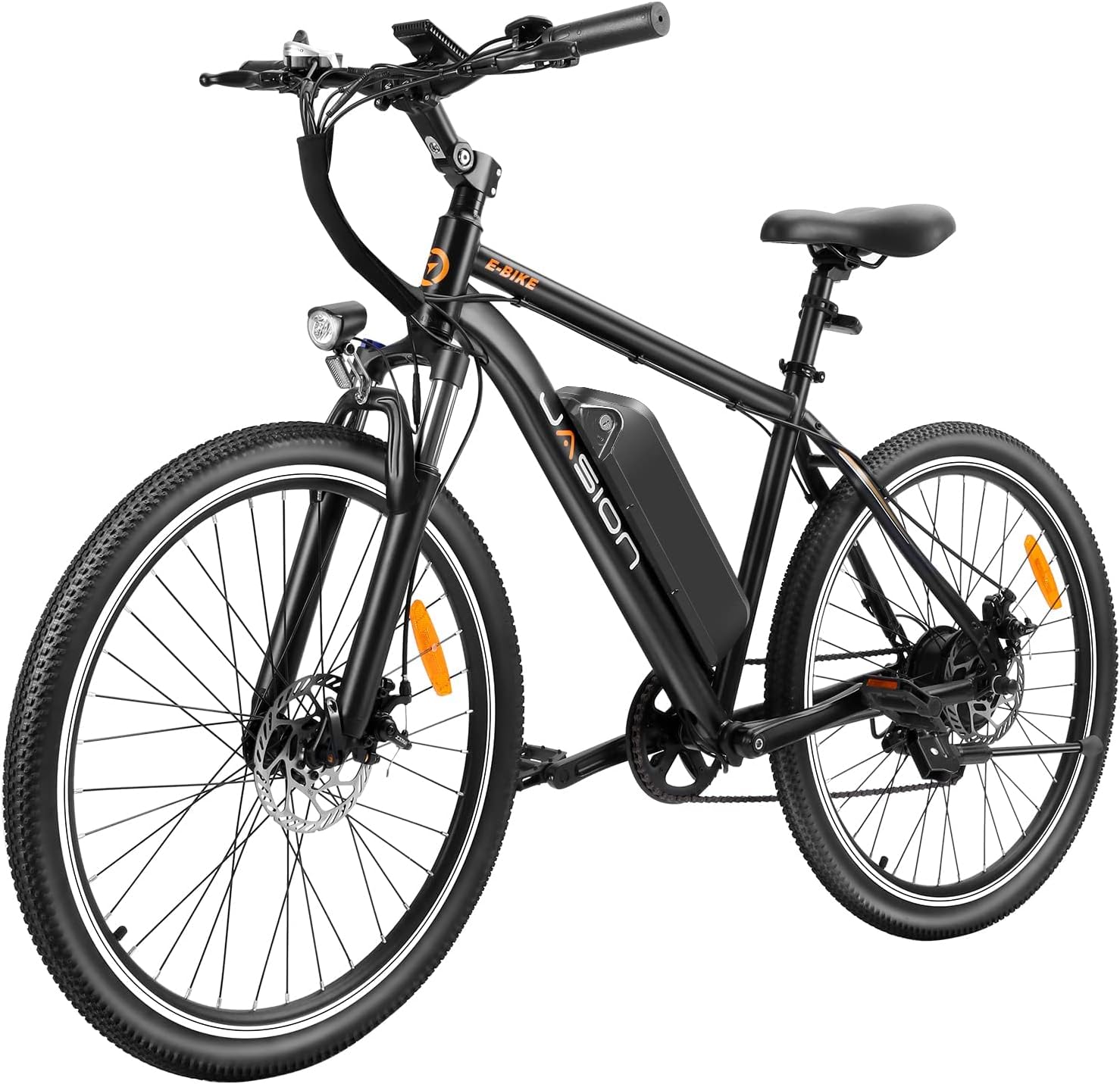
 Vetted3 months ago
Vetted3 months agoJasion EB5 Electric Bike Review: Commute Mountain Bike for Adults
-
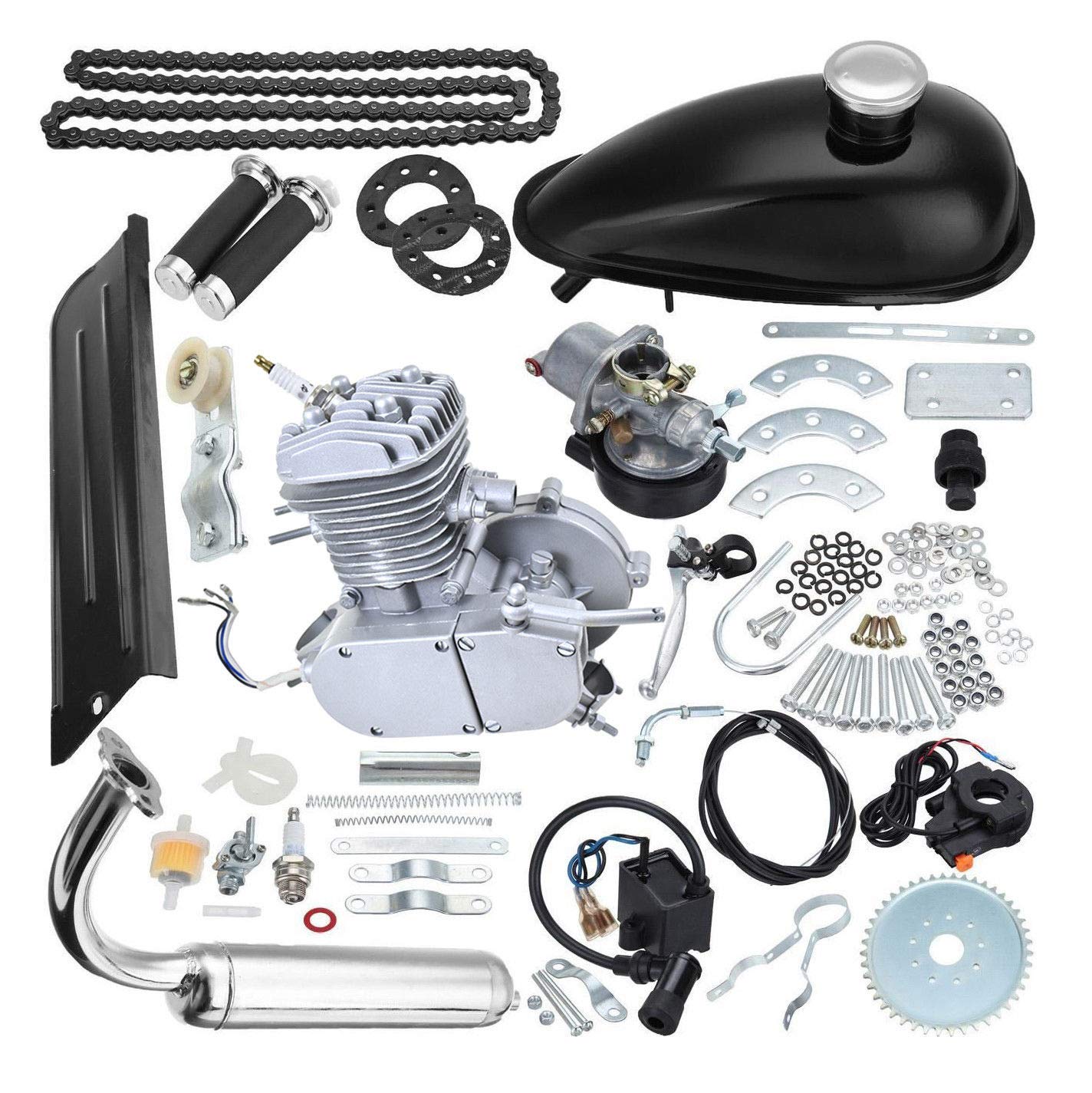
 Vetted3 months ago
Vetted3 months agoReview: 80CC Motorized Bicycle Gas Engine Kit with Performance Carburetor
-

 Beginners Guides2 months ago
Beginners Guides2 months agoWhere Are KTM Motorcycles Made?
-

 Vetted3 months ago
Vetted3 months agoFREESKY Electric Bike Review: 1000W Motor, 48V Battery, Full Suspension
-
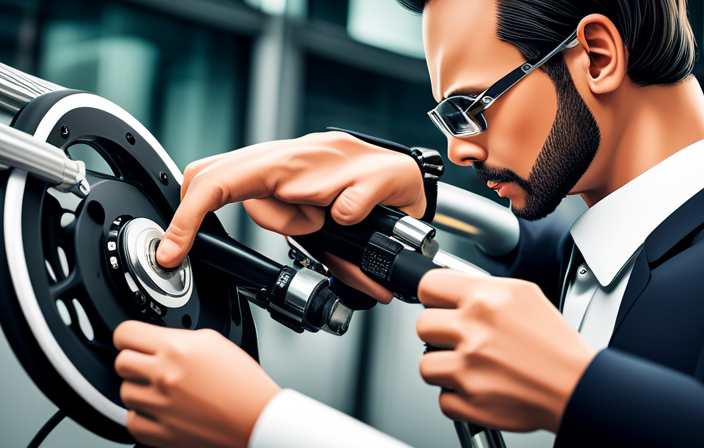
 Electric Bike3 months ago
Electric Bike3 months agoHow To Program Electric Bike Controller For More Speed




